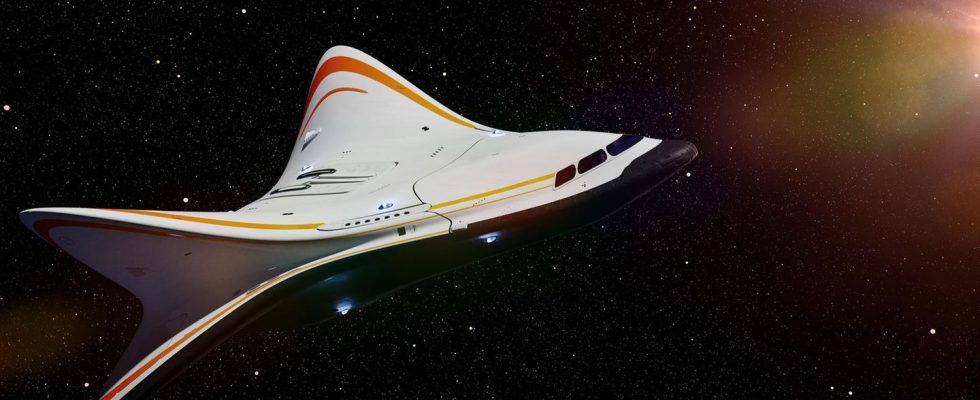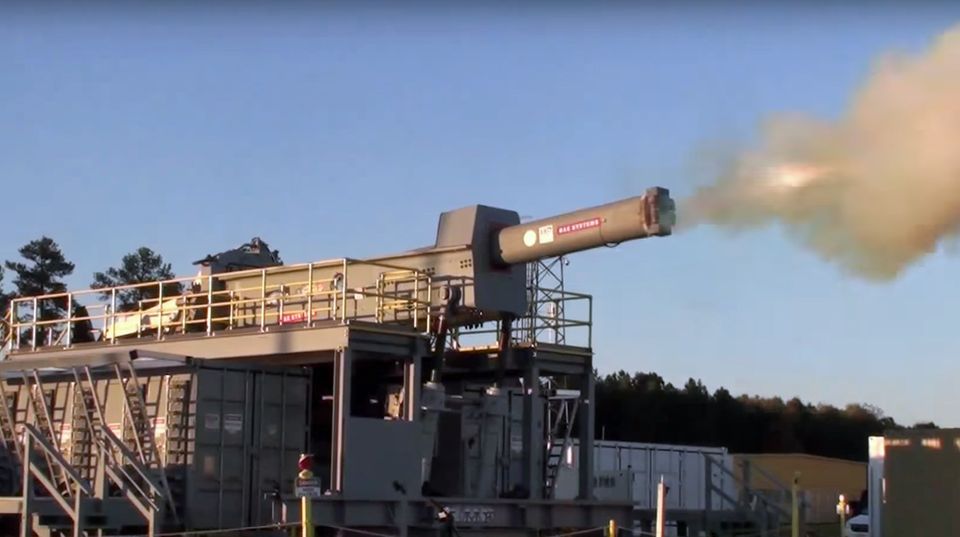Space travel
Huge space cannon is set to conquer space for China
Free illustration of a space glider
© Getty Images
With a cannon into space, others have already had this idea. Now the Chinese are trying it. A railgun is supposed to act as a huge catapult and take over the launch phase for a space glider.
With a cannon to the moon – that was the idea of the early science fiction author Jules Verne Space travel. Instead of a rocket engine, the capsule was fired from a tube. The project cannot work as Jules Vernes imagined, but it is not unreasonable; instead of the expensive one-way technology of a rocket engine, a reusable structure is used. This would massively reduce costs and allow launches to be cycled much more quickly.
The dream of the super cannon
Gerald Bull is considered the greatest artillery expert of the post-war period; he was also obsessed with the idea of a space cannon. In the 1960s, Bull worked on the High Altitude Research Project (HARP). With converted old naval cannons, he reached heights of 180 kilometers. To reach orbit, Bull wanted to build projectiles with an additional rocket stage. That didn’t happen. Although he needed only small funds, the whole project was abandoned in favor of the ballistic missiles on which Wernher von Braun was working.
Bull never let go of the project throughout his life. Eventually, Saddam Hussein showed interest in the supercannon. Supposedly it should be able to carry 600 kilograms into orbit. Before Project Babylon could be completed, Bull was assassinated by Israeli intelligence.
Electricity instead of powder
Now China is taking up the idea of a space gun again, reports the South China Morning Post. However, with one crucial difference. The new project wants to use so-called railgun technology. Here the bullet is not accelerated by the explosion of a propellant charge, but by an electromagnetic pulse. This circumvents the basic problems of Bull supercannons. On the one hand, this is the enormous pressure that such a cannon creates in the chamber and in the barrel. On the other hand, the speed of the expanding gas and thus the starting speed cannot be increased arbitrarily.
Strong acceleration
There are also technical challenges with the railgun, but in principle it can accelerate a mass very quickly. For this reason, the USA has also been working on military railguns; they could have a much greater range than powder cannons. However, the USA dropped the project in favor of hypersonic weapons and lasers.
China, on the other hand, continues to work on railgun technology. The new project is actually more of a launch aid for a space shuttle. The hypersonic ferry is supposed to be accelerated to take-off speed on a huge ramp by the railgun’s electromagnetic pulse. That would be 1.6 times the speed of sound – around 2000 kilometers per hour. The spacecraft would then ignite its own engines and accelerate to seven times the speed of sound.
Between vision and real project
One can hardly speak of a capsule; the spacecraft is said to weigh 50 tons and be longer than a Boeing 737, at least according to the “Tengyun project” presented in 2016. What is the advantage? When starting, a particularly large amount of fuel is used, which also has to be stored somewhere. With the railgun, the energy supply and technology remained on the ground. For this purpose, the shape and drive of the flying object can be completely optimized for high speeds. “Electromagnetic launch technology offers a promising solution to address these challenges and has emerged as a strategic frontier technology pursued by the world’s leading nations,” writes the research team led by Li Shaowei in the Chinese journal Acta Aeronautica.
The Chinese seem to have moved beyond the stage of pure mind games and computer simulations. They carried out initial tests in a test facility that was primarily built for magnetic levitation trains. It was about air currents and vibrations in the starting phase that arise between the railgun slide, the ground and the glider.
The launch of such a space glider is a long way off, but one should not dismiss the project as a pipe dream. China is investing and working intensively on electromagnetic technology and wants to use it in both civil and military sectors, be it as cannons, as starters for jets or in railways. Central future technologies such as magnets and power supply without resistance are associated with these projects. So the space gun is a piece in a much larger puzzle.





